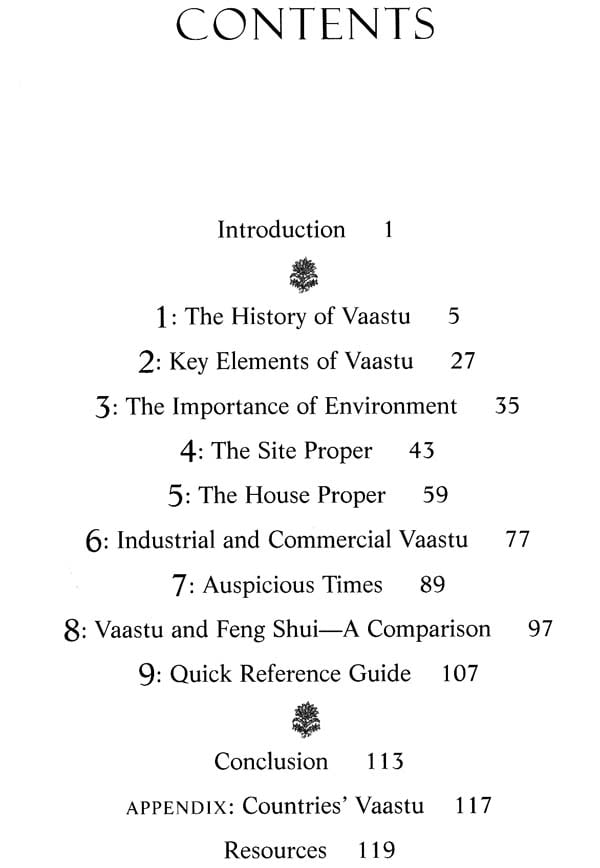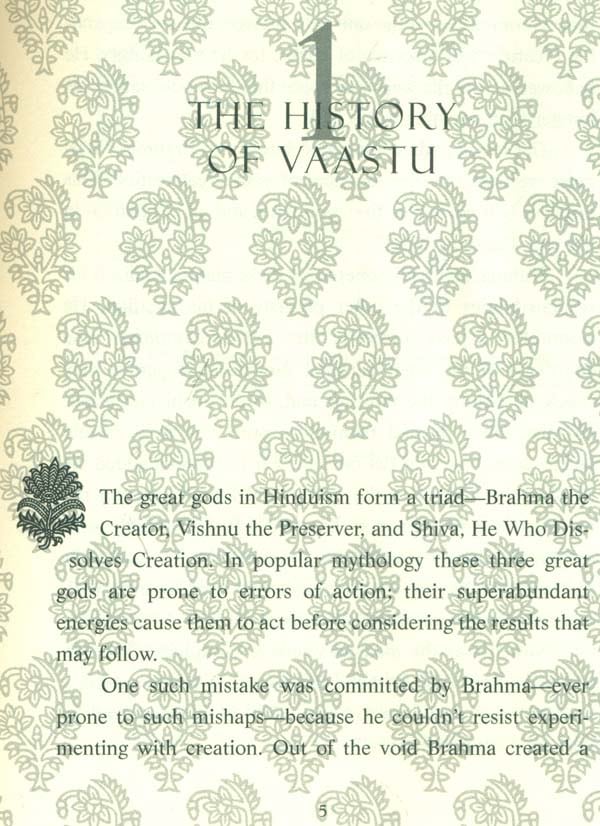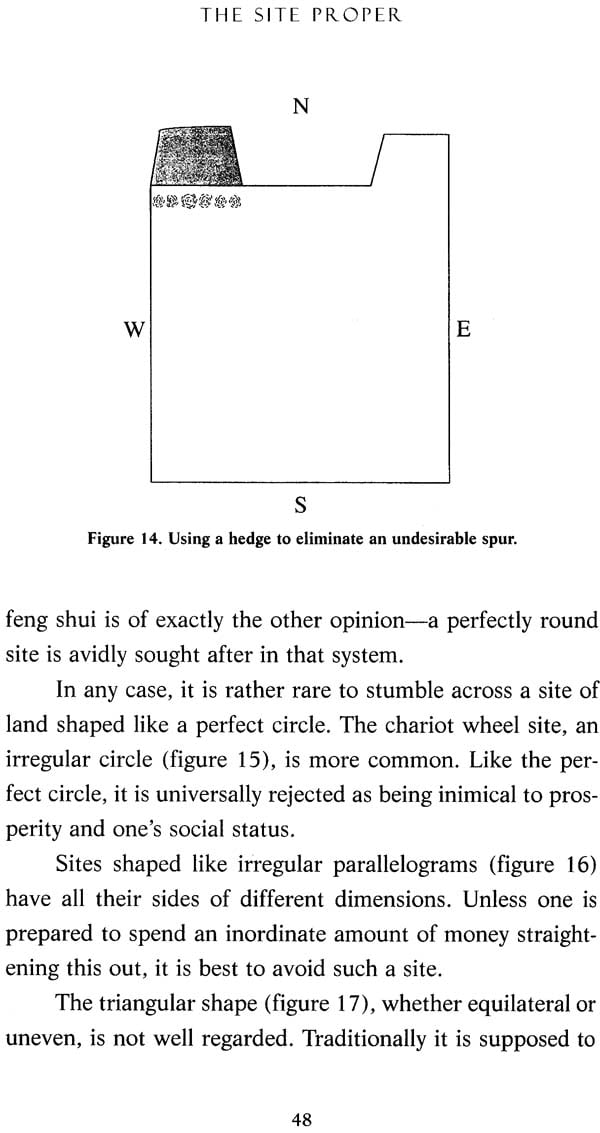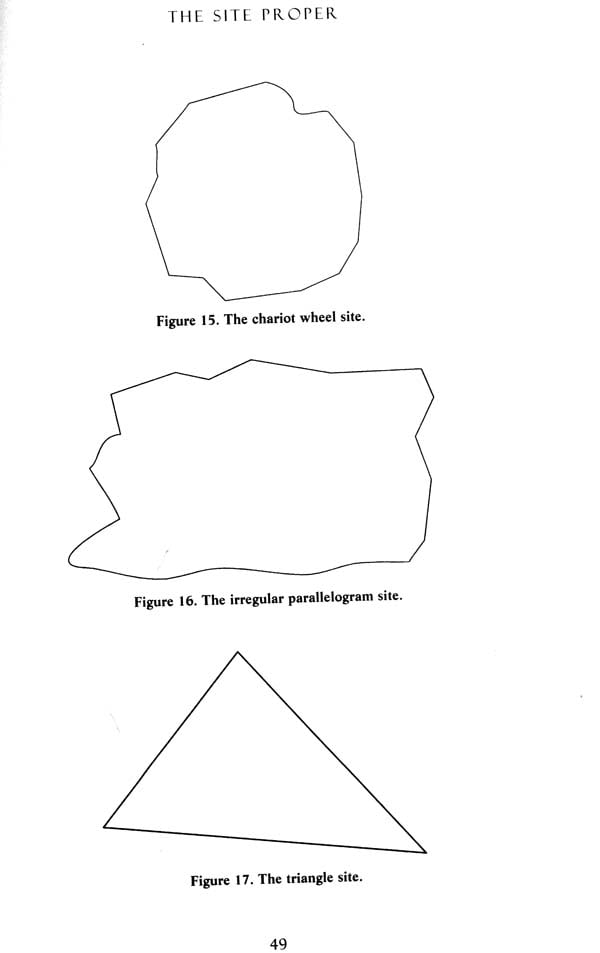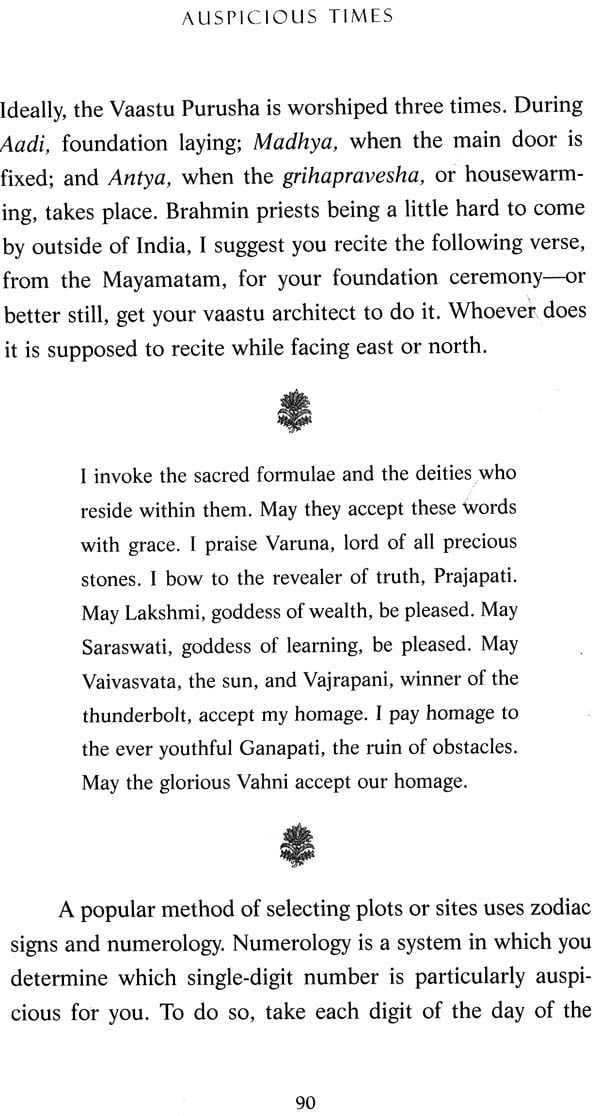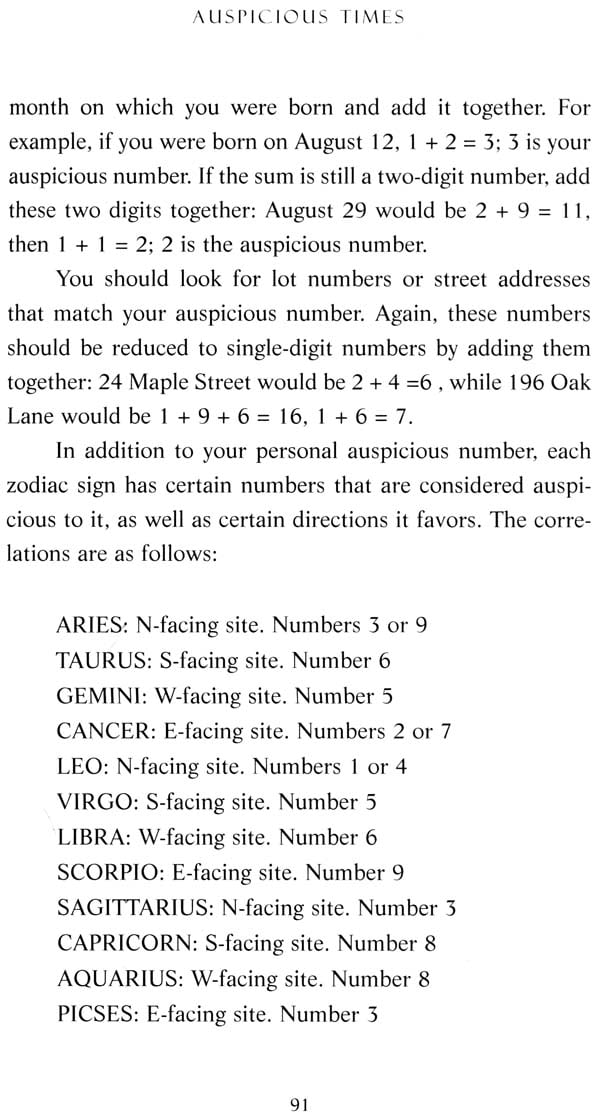
Vaastu - The Indian Art of Placement (Design and Decorate Homes to Reflect Eternal Spiritual Principles)
Book Specification
| Item Code: | NAQ574 |
| Author: | Rohit Arya |
| Publisher: | Destiny Books |
| Language: | English |
| Edition: | 2000 |
| ISBN: | 9780892818853 |
| Pages: | 123 |
| Cover: | PAPERBACK |
| Other Details | 9.00 X 6.00 inch |
| Weight | 200 gm |
Book Description
The subtle art of energy management for prosperity, good health, and calm mind has been introduced to the West through feng shui. Until now the ancient practice of vaastu, the Hindu art of environmental design, has been relatively unknown. Born of the same Hindu understanding of universal forces that informs yoga, vaastu is the human expression of life's impulse to harmonize itself with the cosmos.
The great culture at Harrapa, in 3000 B.C., applied vaastu to create cities at a level of sophistication that would only be reached again in the nineteenth and twentieth centuries. Housed in a library in north India, the codified tenets of vaastu were destroyed in medieval times by successive invaders into the country; however, the art of vaastu remained alive, through oral tradition and buried deep within other treatises. The rediscovery of these texts in the 1930s has led to a modern revival of this art in India-brought to Western readers for the first time in Vaastu: The Indian Art of Placement.
Vaastu elucidates principles that orient and plan each element of a structure, both the big picture and the small details. A building's site, ground plan, shape, and orientation are all-important considerations, as are soil quality, window placement, and construction materials. The affinities of household items-the telephone, computer, bath-with the five elements of nature, and thus their ideal placement within the structure, are also described. Guidelines for modifying existing buildings help the reader apply the vaastu principles in a practical manner. Vaastu: The Indian Art of Placement will assist in creating personal environments that promote peace, harmony, and health.
ROHIT ARYA is a professional journalist and art critic, with extensive background in sociology, philosophy, and comparative mythology. He is a member of the Foundation for Human and Economic Development, a congress of leaders in business, education, and public life from India and the United States. He lives in Mumbai, India.
Architecture is one of humankind greatest means of celebrating our place in the natural world. It is a conscious rational effort to create harmony. They spirit of the world is acknowledged, even as structures are reared to of urban life. The country house was too close to nature to attempt to order it, but the city or town uses architecture as an act of self-assertion in the face of nature’s harsh realities.
India can lay claim to the oldest urban settlements ever known to humankind – the towns of the Harappan Plains, circa 3000 B.C. It also had a culture that adored and exalted nature yet used one word-nagarika-to describe both the city dweller and the cultured human being. Architecture in India therefore had very strong urban moorings from its inception.
Fortunately, Indian culture has always valued the transcendent cosmic aspects of art. Hence the striking distinctiveness, the idiosyncratic originality, of vaastu shastra, the Indian art of placement. Vaastu shastra reaches out to the universe even as it simultaneously imposes structure upon it. It is a strange amalgam of science and religion, of design and instinct-perhaps inevitable for a practice that has lasted over two millennia and has only now been taken off the list of endangered arts. Vaastu concerns itself with the subtle complexities of the energy system that is a human being in relationship to both the natural and designed environments. Its links with geomancy are especially strong, and its fundamental philosophy is in agreement with feng shui, even though both differ widely in details. To state it simply, vaastu is the creation of forms that are in harmony with the natural laws of the cosmos.
At its most practical, vaastu lays down certain principles that orient and plan each element of a building from the big-picture considerations such as shape and size to the details of where windows and doors should be placed. In traditional India, building a house was not just an investment for the future. It was also a religious act, one of the vows made by the groom to the bride. She accepted him on the condition that he build an edifice for the public good: a way- side shelter, a temple, or an inn. The private and public spheres of a person's life were never considered to be separate compartments. The individual expression of self, manifest in building a house, was always to be tempered by the deference to traditional wisdom and its principles. Such balance was believed to bring about prosperity and the contentment of an enriched public life. For, as defined in the Rig Veda, vaastu is derived from the phrase vasanti praminae yatra, "a place where living beings reside." To make such a place a representative of the cosmos was therefore an attempt to live life more fully.
This book seeks to keep alive the spirit of vaastu. Wisdom is not restricted by history, time, or culture. The moment is now for vaastu to take its place on the honor roll of ancient arts of the world, and become accessible to all.
**Contents and Sample Pages**
